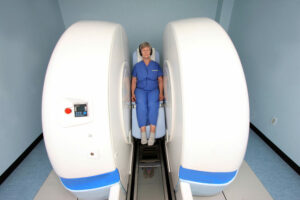
Toyota’s research hub tests seatbelt safety for pregnant women
By onAnnouncements | Market Trends
Toyota’s Collaborative Safety Research Center (CSRC) recently tested whether it was safe for pregnant women and their babies to wear seatbelts.
The automaker said the research was conducted to confirm seatbelt safety for expectant moms as expectant customers don’t always feel safe wearing them given that they fit differently on pregnant bellies.
“The common misperception that seatbelts aren’t safe for pregnant women surprised me,” said Juliana Said, a body design engineer in Toytota’s research and development department. “Some people were even avoiding using them. The idea was: can we help show that the designs are safe while investigating areas for further enhancement?”
Said and her colleagues discovered there is limited research about the effectiveness of seatbelts for pregnant women. Further complicating the issue was that the aftermarket is rife with untested and unverified safety devices, Toyota added.
Said’s team conducted their research at Toyota’s CSRC in Ann Arbor, Michigan with the University of British Columbia (UBC), which had access to a specialized machine designed to map anatomies in a seated position, the automaker said.
The research found that while pregnant vehicle occupants have better outcomes when wearing seatbelts, there are opportunities through additional research to further explore seatbelt fit for pregnant women.
The research hub has since begun collecting data that engineers could use to explore further designs, according to Jason Hallman, senior research manager for CSRC.
“We design seatbelts using standardized dummies and processes,” Hallman said. “There’s no standardized dummy [and] no standardized tools available specifically for assessing pregnant occupant safety. Therefore, the industry doesn’t have a clear understanding of how future seatbelts could better protect pregnant women or fetuses during a crash.”
Toyota said CSRC will use data generated at UBC to create a computerized, 3D model of pregnant bodies that encompasses women of different sizes at various stages of their pregnancy.
“In the future, the research project could help enhance one of Toyota’s research achievements, the THUMS digital crash injury model,” the OEM said in a press release. “THUMS is like a virtual crash test dummy, constructed from painstaking research on different kinds of human tissue and how they react to crash forces.”
Toyota said additional research could determine whether third-party devices designed for pregnant women, such as specialized seatbelts or seat cushions, have safety benefits.
“These types of devices may seem logical, but they’re not subject to the kind of rigorous testing used for seats, belts, airbags, and other parts of the car’s interior,” the OEM said. “With better information in the future, such as virtual pregnant crash-test dummies, researchers will be able to draw better conclusions.”
Images
Featured image: University of British Columbia’s specialized magnetic resonance imaging machine is pictured in use. It’s designed to map anatomies of body shapes in a seating position. (Credit: UBC Upright Open MRI Research and Toyota)
